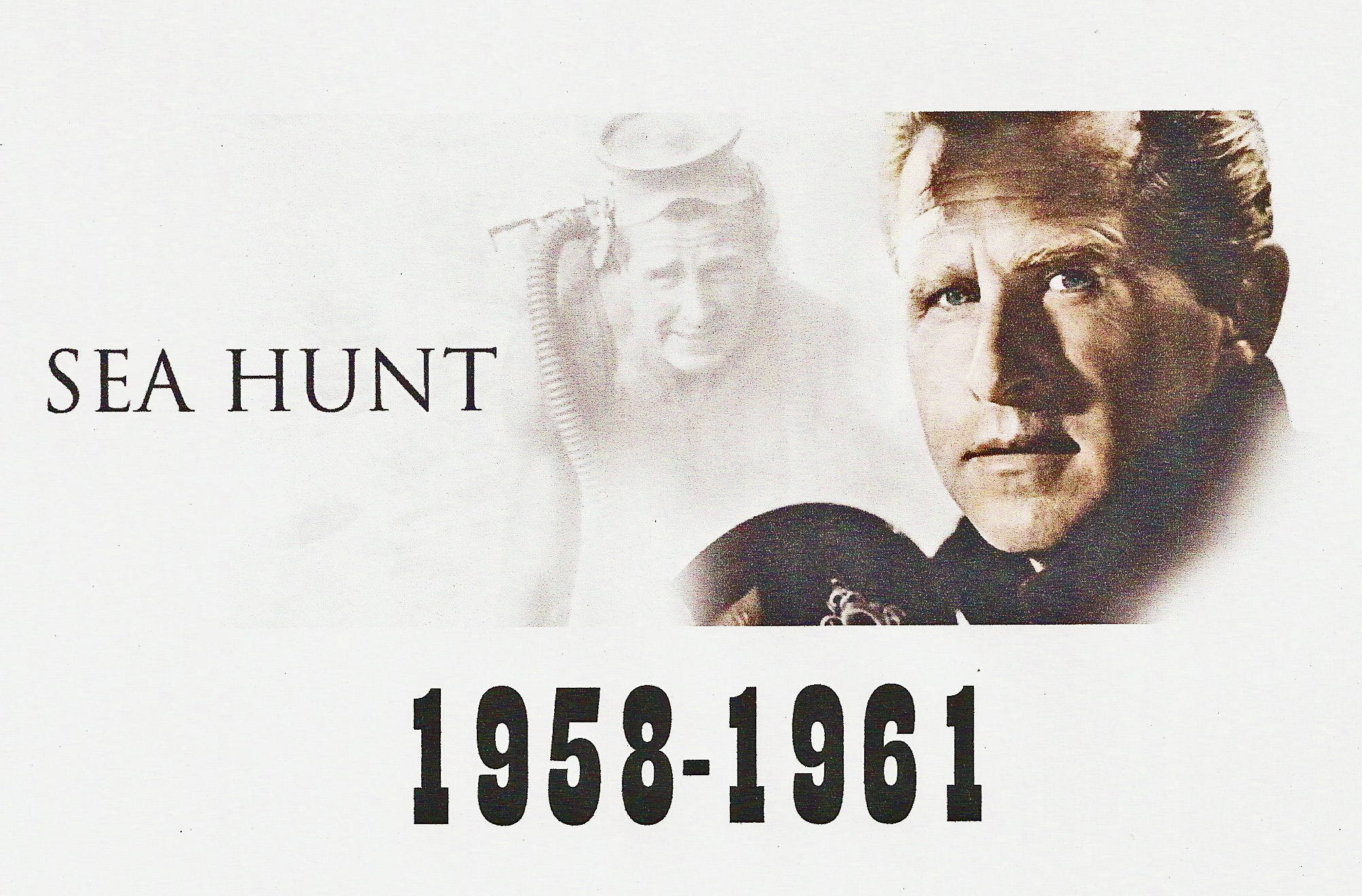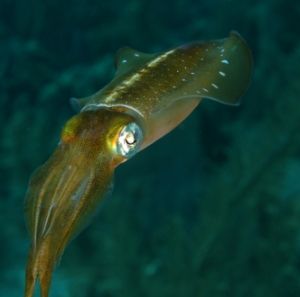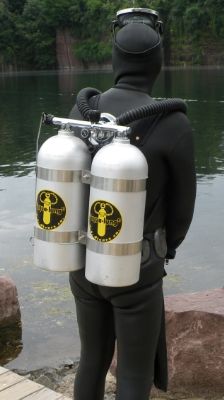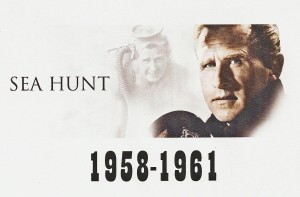VINTAGE TALES
May 29th, 2013
The adventure of the Sea Hunt shows began in 2006, which I believe was Sand Dog III. One of the dive activities included a drift down the Silver River with Curt of Paradise Spring. This trip involved meeting at a small county park east of Ocala, loading on to Curt’s pontoon boat and riding up stream to Silver Springs Park, the head of the river. The trip in itself was a good time as numerous Florida critters were spotted including monkeys, lost decades ago during the filming of Tarzan at Silver Springs. The ride took us into the basin. Obviously we were ready to start our drift dive, but were told that no one was allowed to dive in the head spring. But wait wasn’t this where Sea Hunt was filmed? Yep, but you can’t dive here. So back down river we went to do an hour or so drift dive. Gars, bowfins, tons of plecostomus and a gator or two, but that is another story.
Sand Dog IV, another great time, and another ride with Curt. Again I asked why don’t we start in the basin, Mike Nelson and all. NO WAY, NO ONE dives in the spring. For those who know me, this big, fat NO is like the preverbal red flag. I WILL dive in Silver Springs! But how? Let’s see next year is 2008; wait, didn’t Sea Hunt begin its TV run in 1958? Bingo, 50th Anniversary.
That summer, fall, and winter I made millions of phone calls (well, it seemed I did)and as many emails. About early fall I became associated with the public relations/event coordinator at Silver Springs named Steve S. My first phone conversation sort of went like this: “Hello, Silver Springs and Wild Water, Steve S., Event Coordinator”.
” Hi Steve, I am Allan K. and I was wondering if you realized this 2008 will be the 50th anniversary of the Sea Hunt TV show filmed in your spring”.
“No, I didn’t realize that”
“Well, I am the organizer (LIE) of a group of vintage divers who think it would be a great idea for Silver Springs to have an event celebrating the 50th anniversary of Sea Hunt. Our group enjoys collecting the gear that was used during the years of Sea Hunt’s production.”
I went on to tell him a little about NAVED and the various Sand Dogs, etc.
“That sounds like a good idea,” Steve commented. The next question (now you must realize the conversation so far has been less than a minute) was unbelievable. “Do you think that maybe a few of your group would be willing TO DIVE IN THE SPRING WITH YOUR VINTAGE GEAR FOR THE GLASS BOTTOM BOAT VISITORS TO SEE?”
Duh! Ah! I had this great speech written to beg if I had to so that we could dive a bit there, and he was asking us to do it!
In November Rob, Bryan and I journeyed to Florida to meet with Steve and set out our plans. And, of course, we absolutely needed to “check out” the logistics (right!) of the diving in the spring. See Curt, I did dive here, ha! Ha!
The rest of 2007 and through early May of 2008 I assembled as many of divers who were willing to obtain much of the gear of Sea Hunt. (We were a bit lenient that event. )
Suddenly in early May, Silver Springs, under new management, let Steve and our chief logistic man, who had worked at Silver Springs when Sea Hunt was filmed, go. We were now working with a new person by the name of Brooks J. My first conversations were to try to get him up to “speed” on a project, that by best description, would be considered entirely impromptu. But as luck would happen, Brooks gave us complete control. We did whatever we wanted. And SEA HUNT 50 CELEBRATION became a memory that I am sure will be remembered by all who participated for a life time.
Three years later, I emailed Brooks again, told him that 2011 was the 50th anniversary of Sea Hunt’s last year of production (1961) and deserved a special event. He simply said, “What would you like to do?”
Again a million more phone calls and emails later I had my cast, crew, staff, photographers and hypertension. This time, the event would be juried, i.e., ALL gear had to be correct, a task which proved to be very difficult to not only determine, but for some to obtain.
The event took place on Memorial Day 2011, three years to the day of the first show. Sea Hunt Live! was better than ever, the result of more careful planning, advertisement, and wonderful people who were involved.
Will there be another Sea Hunt Special Event at Silver Springs? Who knows, I vowed never to do another after 2008. And then you know me, when someone says NO!
WHY DIVE VINTAGE?
Jacques-Yves Cousteau first called it the Silent World. To be a “manfish” swimming in the sea has always been the dream of so many. To explore the wonders of the depths of the ocean, to open 3/4 of the Earth’s surface to humans, and to feel the complete freedom of 3 dimensions was possible with the diving lung.
With only a single air tank strapped to your back, a pair of rubber foot fins and a glass mask to see the wonders, a true sensation of liberty from perpetual gravity emerges. The rhythmic flow of silver parachutes float skyward from the lung, escaping between corrugated arches. The soft and gentle hiss, followed by the satisfying murmur of bubbles, bring us to a simple reality that we have invaded this aqueous realm. The lung provides the necessary breathing gas that makes this adventure possible.
This encounter can best be experienced with the use of dive gear in its simplest form. Some call it minimalist, some vintage. I call it, my world. Peering though the oval window without intervals of bubbles blocking my vision, be it through a camera lens or not, gives me another sense of belonging to this foreign environment. Lost for a few moments is the reality of human atmospheric dependency. The silver parachutes race back to their world, leaving me in mine. Have I become a “manfish”?
Those pieces of rubber, strapped to my terrestrial feet, move me soothingly through the seas. I do not need appendages of power for to hasten is to neglect some of the wonders of this world. Be it a lowly sponge of vibrant colors or another magnificent pelagic creature, some way above humans in the chain of life, all deserve to be viewed and cherished with patience.

Being underwater is a privilege. An earned event enabled by those before us who ventured below the sea’s surface. If I can thank them by diving the way they did, becoming a “manfish”, then maybe I am worthy to be part of the Silent World.
TO BE OR NOT TO BE VINTAGE
The diving world has embraced technologies in equipment development. From the 1940s to the 2010s change has occurred in diving equipment. This change has been the result of need, safety concerns and style. When scuba caught its roots in the general public in the 1950s, companies and individuals have developed and produced pieces of dive gear that allowed the sport to grow. Some gear was silly; some was innovative. Other gear became the norm and accepted; other equipment lived the life of the dinosaur. Many of us who started our underwater adventures used these items and came to love the systems as they were at the time. And from these divers, who today are also becoming dinosaurs, a bit of nostalgia has grown. The concept of vintage diving was born.
During the late 1990s a strong group of individuals banded together to resurrect this idea, i.e., diving with the gear of the 1950s and 1960, aka, the double hose era. A website came into the world, a “home” for many like-minded people. But as with most groups, factions occurred, the website slipped and new ones were formed. One such website began with the boldest of the individuals, those who held the bond of true or at least as best possible for the time, and had a love of the gear of the selected period.
Reproduction parts became available. Parts that were made that were visually identical to the original, but with modern materials. (Silicon vs. rubber). These parts allowed for more period pieces of dive gear to be resurrected, which had two results. More people were becoming interested in “vintage” diving and the prices of original gear moved upward.
As the demand for more “vintage” or by now vintage style gear grew, “mom and pop” companies formed, A & D Adventures, LLC one of many. And, the main business concern in the reproduction of parts formed a full-time company. The result has been disastrous to the “vintage” world.
With convenience comes complacency. No longer did the divers who dabbled in the vintage world try or even want to try to dive as we did in the 1950s, they wanted to keep the modern “toys” and make the original stuff work with them. Best example: No longer are divers necessitated to learn buoyancy by proper weighting and lung control, heck, just inflate a BCD. I have always used this analogy. “Like putting Goodyear Tires on a Conestoga Wagon.” But you always hear this too, “If they would have had it, they would have used it”. But alas, they didn’t. (Gee Custer would have loved a few AR-15s).
So the short time of the late 1990s to the 2008 or so was the golden era of vintage diving resurrection. Like one of the “destroyers of the movement”, a Phoenix did arise from the past and lives on in but a very few. One may just see them some day in the St. Lawrence or at a juried special event of period diving, but to see a true vintage diver in your world is like seeing a Passenger Pigeon or Dodo Bird pass your way.
Dive Trip to Bimini via the Juliet and some lion fish hunting.
|
The Hunters – Juliet Trip 2013
https://vimeo.com/80118342 If not a hot link, copy and paste in your browser address.
|
BACKPACK CHANGES
Recently some discussion has occurred pertaining to the correct placement of a double hose regulator in relation to a diver’s body. The current and possibly historical view seems to be that placing the regulator body close to the back and directly between the shoulder blades provides the optimum location for ease of breathing.

With this as a basis, my discourse is directed to the historical development of harness/backpacks for this purpose. I am basing these thoughts on some speculation beyond recorded data and through personal and direct communication of actual diving experience.
In the 1950s almost all of the tank harness configurations were based on simple webbing. The attachment of the webbing to the tanks consisted of metal bands and/or various “basket” designs made of the same webbing. No matter what method of tank attachment, the harnesses consisted of two shoulder straps, a sternum, waist and crouch sections of webbing. Typically, the webbing was made of cotton. In all cases, the webbing harness enabled the diver to position the regulator exactly where he wanted it to be; tight to the back and right between the shoulder blades.


Near the end of the 1950s decade, Dacor along with Sportways and Healthways, who were recent newcomers to the scuba world, introduced a flat plate to which a harness was attached. The plate had metal bands of various designed to hold the “back plate” to the tank. I believe the thought for these designs was to help eliminate a possible tank roll that can occur with a web harness if it isn’t adjusted snug to the body. Sportways also introduced nylon as the webbing material, but kept the harness parts that were used in the previous decade. A slight modification occurred in that the top of the shoulder sections were separated where they attached to the back plate Previously the two shoulder straps originated from one point. Interestingly, Healthways and Dacor did away with the sternum strap, but maintained the crouch strap. Of these three models, I prefer the Sportways system due to the sternum strap for security.

The 1960s opened a literal flood of ideas for diving equipment. Much development was based on new concepts, most were there to produce a “new and improved mouse-trap”. The 1960s saw the rise and eventual domination of the single hose regulator and as such diving equipment companies saw this change as the future of scuba. So, I believe the resultant changes that occurred in harness/backpacks were in direct response to the future vision. A second major equipment change that was to forever have an impact on diving was the buoyancy compensating device. Keep in mind however that many commercial, military, professional, and more experienced divers were using double hose regulators, possibly not ready to embrace the emerging single hose units.
Dive equipment manufacturers introduced numerous harness/backpacks. US Divers introduced a plastic Bac-Pac (later referred to as the Dolphin Pac) and what many of us know as the “Dog Bone”. The Bac-Pac eliminated the sternum strap, the “Dog Bone” used a completely new concept. The idea was to configure the tank with a plate so that the weight of the tank was on the small of the back. To do this, the tank was oriented off the back toward the bottom to allow for a shift in the tank’s balance to achieve the desired positioning. This seems similar to backpacks used in camping, etc. As for webbing material, nylon had eliminated the use of cotton.


Of primary importance in the change of backpacks, Sportsways introduced a contoured shell design. Although it continued the typical harness pieces, this development would effectively eliminate the harness/webbing device used previously. Healthways stayed with their plate for a few years. However all of the other major players incorporated the contoured shell in their tank/harness systems.

The contour shell had a few common characteristics. Other than Dacor and Sportways, most companies began the use of plastic as the major material in the shell. They also used a 2” nylon webbing that was basically of two pieces. One section was the shoulder and waist on one side and the other piece made up the shoulder and waist on the other. Note that there was no sternum strap nor crouch strap.

Toward the late 1960s, BCs were beginning to be used by more divers. The horse collar came into its glory years. Of all of the BCs ever made, the horse collar is fantastic on the surface as a floatation device. Underwater as a buoyancy compensator, in my opinion, not so good. But in regards to harnesses and backpacks, the horse collar is very difficult to use if the harness or backpack has a sternum strap. Therefore any harness/backpack that still utilized a sternum strap lost favor. Sportways saw this issue and changed their sternum strap by exchanging a wire quick release buckle for the typical double D-rings used for decades.

The contour shell back gave way to what I call the “blow-molded” back pack. Smaller than the contour shell but essentially the same in configuration of straps and design. This “hollow” piece continues in various forms in today’s modern vest-style BCDs.

Each change of backpacks beyond the webbing harness and Sportways, Dacor, or Healthways plate/harness ideas provided a challenge to the double hose regulator diver. Each change made positioning the regulator in its optimum location more and more difficult.
There were other backpack harnesses used by early divers. Some were commercially available such as the “Hawaiian” or wire based models. And, of course, numerous homemade units were used.



So today, in order to comply with modern diving “restrictions” that require some sort of BC, vintage divers of the purist or reenactment designation find it challenging to satisfy these policies. Most of these divers have now become more eclectic utilizing modern BCs or backpacks that position the regulator in its optimum position and yet allow the safe use of a buoyancy control device.
The double hose regulator can be one of the best breathing devices ever developed. But it is a function of the use of essential dive gear that was designed for it. Trying to mix devices of various time periods is problematic at best and could possibly be unsafe. As Lloyd Bridges would say at the end of his many SEA HUNT TV episodes, “Skin diving is full of fun and adventure. Know the sport well but don’t take any chances.”
VINTAGE SCUBA SKILL
Doffing and Donning with a double hose

